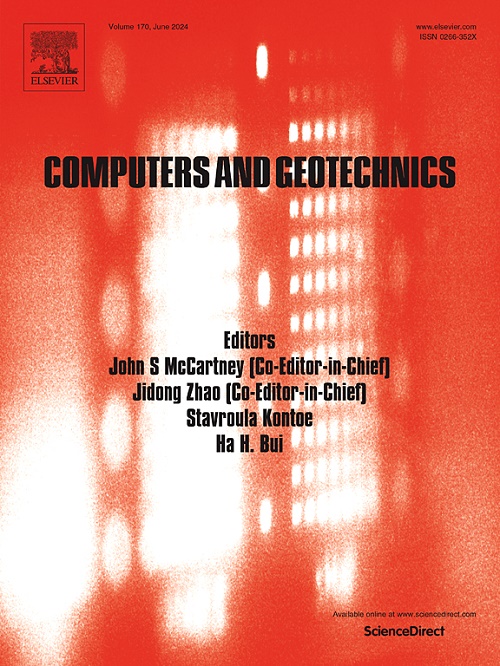SANISAND-CH: A high-pressure bounding surface model for cemented sand, including methane hydrate-bearing sediments
IF 5.3
1区 工程技术
Q1 COMPUTER SCIENCE, INTERDISCIPLINARY APPLICATIONS
引用次数: 0
Abstract
This paper introduces a new constitutive model capable of predicting both the shear and compressive stress response of common cemented sand and methane hydrate-bearing sediments (MHBS) under high pressures. This model extends the SANISAND-H model, which is designed for the high-pressure response of clean sand, and incorporates specific constitutive elements from the SANISAND-C model, tailored for cemented sand under normal stress levels. It refines the narrow, closed conical yield surface of the SANISAND-H model by incorporating a bonding strength variable that diminishes with plastic strains. Furthermore, it modifies the critical state lines, reference compression curve, elastic parameters, state parameter, flow rule, and hardening law of SANISAND-H model to account for the cementing and densifying effects of cementitious materials. To capture the effects of temperature, pore pressure, and salinity on the behavior of MHBS, the model includes a condition parameter, influencing the critical state and bonding strength. Validation through laboratory tests confirms the model’s accuracy in simulating the enhanced shear strength, dilatancy, and softening behavior, as well as the reduced compressibility of cemented sand. Moreover, it accurately captures the mechanical responses induced by particle crushing under high pressures.
求助全文
约1分钟内获得全文
求助全文
来源期刊

Computers and Geotechnics
地学-地球科学综合
CiteScore
9.10
自引率
15.10%
发文量
438
审稿时长
45 days
期刊介绍:
The use of computers is firmly established in geotechnical engineering and continues to grow rapidly in both engineering practice and academe. The development of advanced numerical techniques and constitutive modeling, in conjunction with rapid developments in computer hardware, enables problems to be tackled that were unthinkable even a few years ago. Computers and Geotechnics provides an up-to-date reference for engineers and researchers engaged in computer aided analysis and research in geotechnical engineering. The journal is intended for an expeditious dissemination of advanced computer applications across a broad range of geotechnical topics. Contributions on advances in numerical algorithms, computer implementation of new constitutive models and probabilistic methods are especially encouraged.
 求助内容:
求助内容: 应助结果提醒方式:
应助结果提醒方式:


